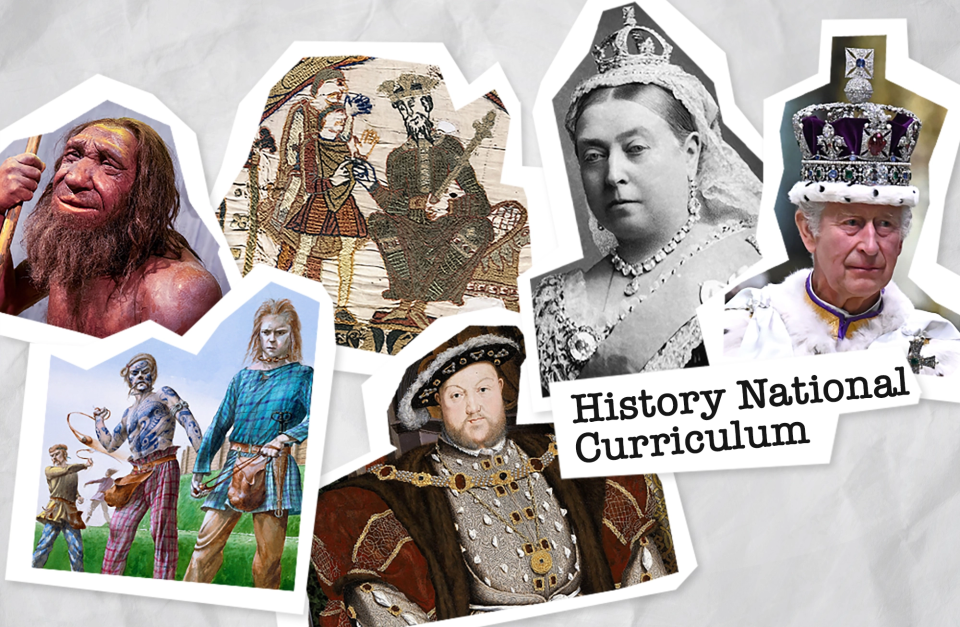The history national curriculum requirements for primary schools in England provide children with a strong foundation in understanding the past, both in Britain and the wider world. But what exactly do you need to cover in your primary history lessons, and how can you make sure they are meeting the national standards while inspiring curiosity? This blog post breaks down the key expectations of the primary history curriculum framework and what schools should include.
The purpose of studying history in primary schools
The national curriculum states that history teaching should help children:
- Gain a coherent knowledge and understanding of Britain’s past and that of the wider world.
- Develop skills in questioning, critical thinking, weighing evidence, and forming arguments.
- Understand historical concepts such as continuity and change, cause and consequence, similarity, difference and significance.
- Use historical vocabulary and build chronological awareness.
What topics need to be covered?
The national curriculum history content has separate requirements for Key Stage 1 (ages 5–7) and Key Stage 2 (ages 7–11).
Key Stage 1 (Years 1–2)
Children should learn about:
- Changes within living memory (to develop a sense of chronology).
- Events that occurred beyond living memory and are significant on a national or global scale (e.g., The Great Fire of London).
- Lives of significant individuals (like Florence Nightingale, Mary Seacole, and Christopher Columbus).
- Significant historical events, people, and places in their own locality.
Key Stage 2 (Years 3–6)
The curriculum should build and expand chronologically, including:
- Local history studies – how a particular area changed over time.
- British history in sequence, including:
- Stone Age to Iron Age Britain
- Roman Britain
- Anglo-Saxons and Scots
- Viking and Anglo-Saxon struggles for England
- A study of a period past 1066 that shaped the nation (e.g., the Tudors or the Second World War)
- A study of Ancient Civilisations, such as:
- Ancient Egypt or Ancient Sumer
- The Indus Valley or the Shang Dynasty
- A study of Ancient Greece (including Athenian life and achievements, and their influences)
- A non-European society that provides contrast with British history, such as early Islamic civilisation, Mayan civilisation or Benin.
Skills and approaches required by the history national curriculum primary framework
To meet the aims of the primary history curriculum, teaching must not only cover content but also develop:
- A strong sense of chronology.
- Use of sources: artefacts, pictures, accounts, and digital evidence.
- Historical enquiry and questioning.
- The ability to make connections between periods and identify similarities/differences.
- Historical vocabulary (e.g., empire, civilisation, parliament, invade, settlement).
Tips for teaching history effectively in primary schools
- Teach chronologically where possible, so children build a clear timeline.
- Make history hands-on: artefacts, trips, and drama bring the past to life.
- Use storytelling to engage young minds.
- Link local and national events to children’s everyday experiences.
- Encourage discussion and writing using historical vocabulary.
Final thoughts
Delivering the national curriculum requirements for history is about more than ticking off topics. It’s about helping children understand how past events shape the way we live today and giving them the curiosity and skills to explore history independently. With a strong, well-sequenced curriculum and creative teaching approaches, you can bring history to life in exciting and meaningful ways.
The Cornerstones history curriculum
Looking for inspiring lessons and resources to bring your primary history curriculum to life? The Cornerstones Curriculum offers everything you need with a carefully sequenced collection of projects designed by subject experts to support teachers at every level of subject knowledge.


